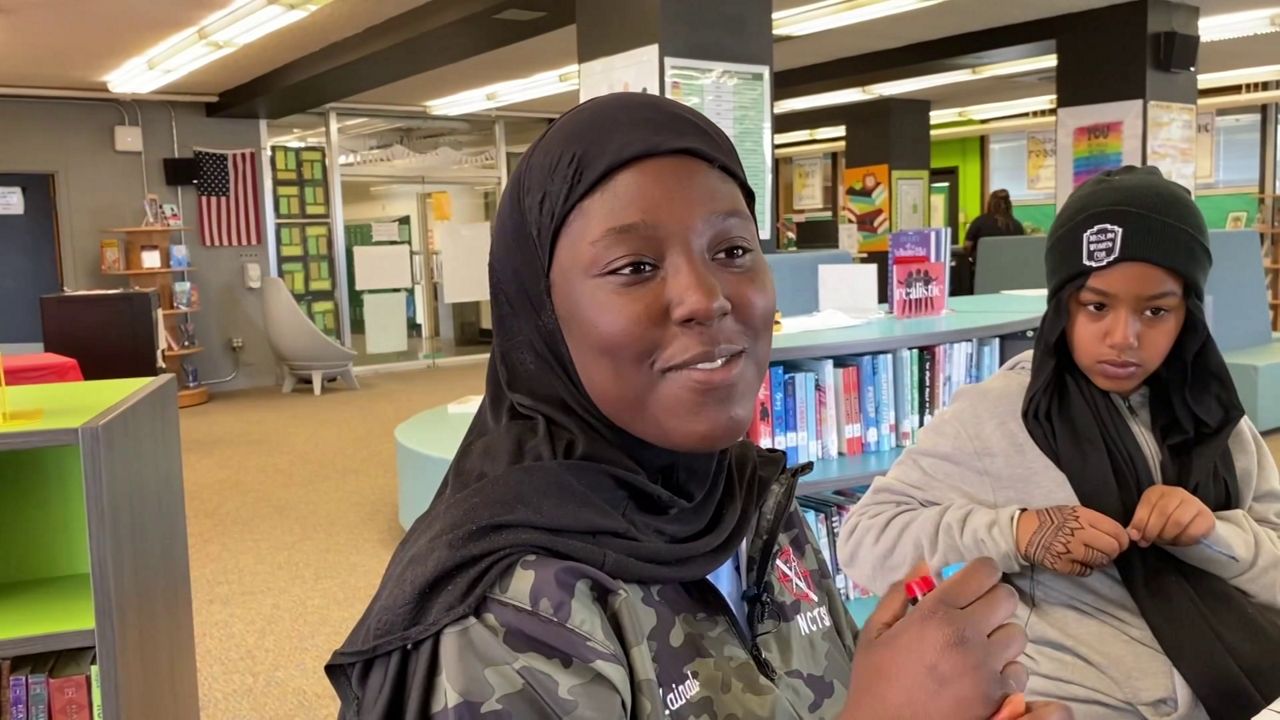RALEIGH, N.C. — The North Carolina Museum of History on Saturday hosted the 28th annual American Indian Heritage Celebration in downtown Raleigh.
Kaya Littleturtle, part of the Lumbee and Tuscarora American Indian tribes and member of a warpaint drum circle, said it's uplifting for people to get together for the event that celebrates American Indian culture.
“A day like today, my grandfather would always say, it's a good day to be Indian,” Littleturtle said. “And a day like today helps to remind me why that is, seeing all of our people come together like this.”
He’s been coming to the American Indian Heritage Celebration at the museum for all 28 years.
“I come from a multigenerational, traditional family,” Littleturtle said. “You know, I can remember my grandfather being here and emceeing this event.”
Littleturtle says it means a lot to him to see thousands celebrating his culture and his history.
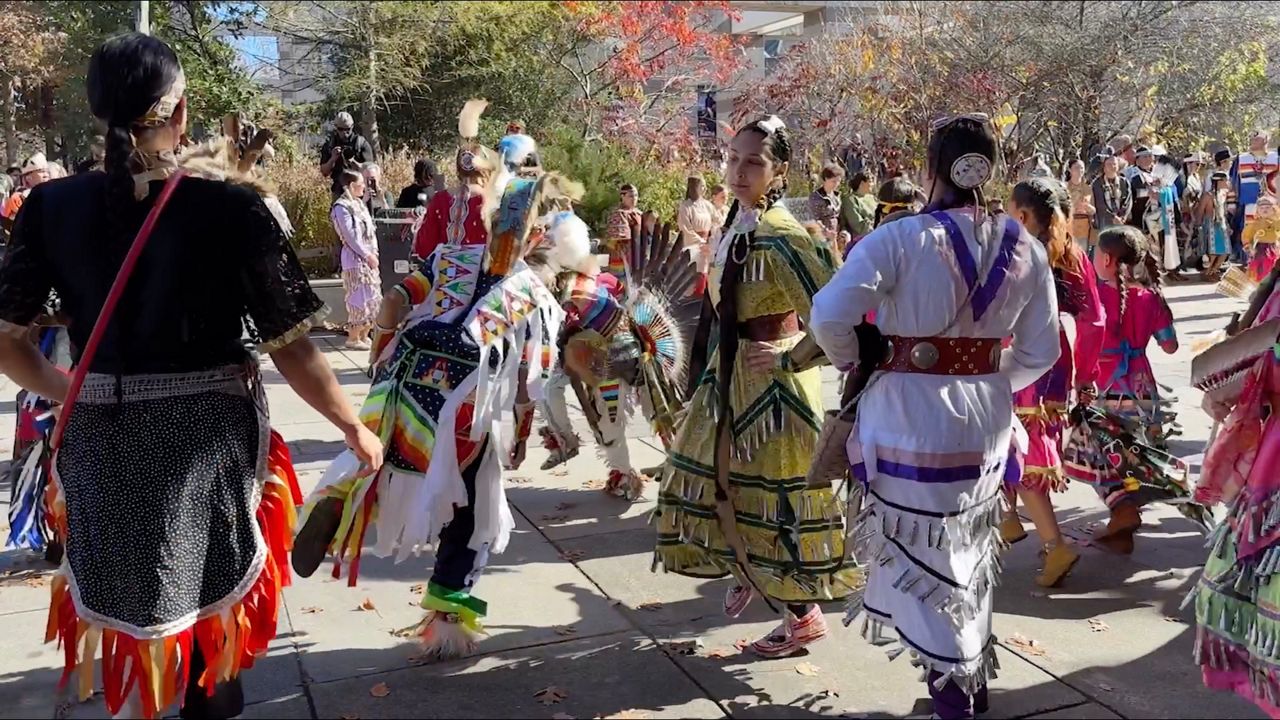
“It’s important for me on a family legacy level, to kind of continue on that good work of our ancestors,” Littleturtle said.
The event kicked off with a grand entry of American Indians in cultural regalia. It included traditional songs, dances and artisans from all eight state-recognized tribes.
North Carolina is home to one of the largest Native American populations on the East Coast, and Littleturtle says events like this are wonderful ways to bring people together.
“Truthfully, history and all the different elements of it can help us progress as a people as we get to understand each other better, the things that make us unique, the things that make us special,” Littleturtle said. “And so these events, when people come out here, I feel like it enriches everybody involved and it brings people closer together, which is what we need.”
Event organizers say they expected 8,000 to 10,000 to attend Saturday’s celebration. The museum also hosted a virtual American Indian education day Friday. About 26,000 students from across the country tuned in to learn more about their culture.
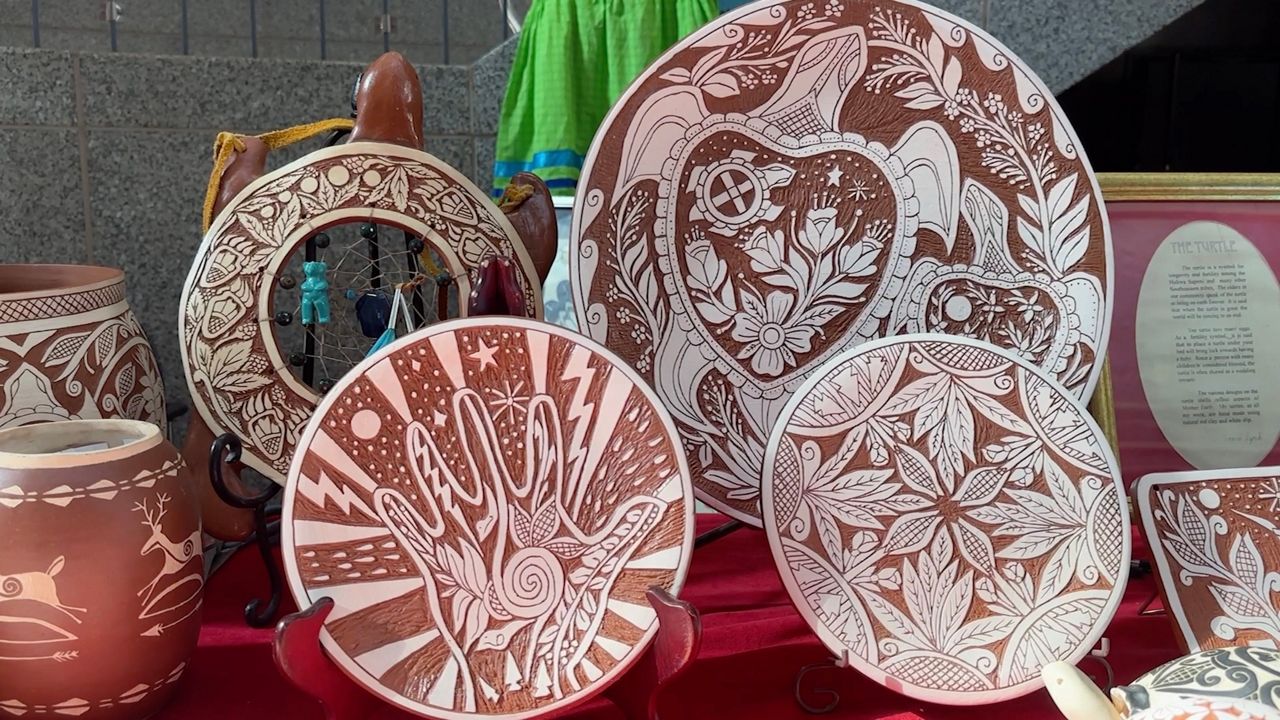
Inside the museum are exhibits dedicated to Native American culture and its impact on our state.
Quinn Godwin has a wealth of knowledge about American Indians and their history.
“I think what most people don't realize about North Carolina history is there's over 12,000 years of history here,” Godwin said. “And this is documented by archeological excavations. You see right here some of these stone tools.”
He grew up in Robeson County as part of the Lumbee tribe. Now he’s on the North Carolina American Indian Heritage Commission.
“Growing up deep inside of an Indian community, I kind of felt like I took that for granted,” Godwin said. “It's been a learning experience, even over the past year for me. And it just fills me with such pride.”
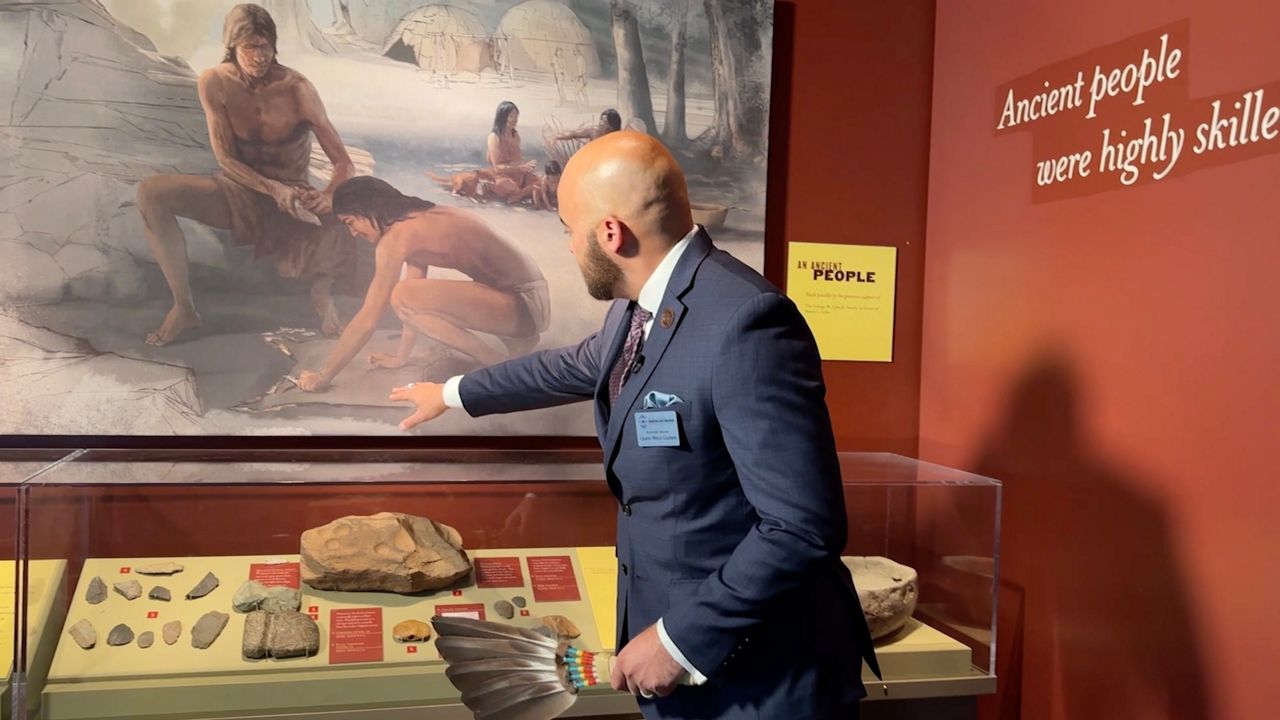
The commission’s goal is to help with the preservation, interpretation and promotion of American Indian history, arts, customs and culture. Godwin says by the 1700s, 95% of the native population had died in North Carolina. Through archeology and oral history, places like the history museum help tell their stories.
“You might hear a phrase this American Indian Heritage Month, ‘We're still here,’” Godwin said. “That's big. And that's a big statement from Native Americans.”
Godwin says many people today don’t understand there is still a vibrant American Indian community here in the state. His hope is that the commission will open people’s eyes.
“So our job, in my opinion our charge, is to tell those stories and fill those gaps between those ancient tribes and contemporary tribes today,” Godwin said. “Because there are still Indians here. The Indians didn't go anywhere. They're still living here. They're your neighbors. They might dress in suits. They're not necessarily in regalia, but they're American Indian.”






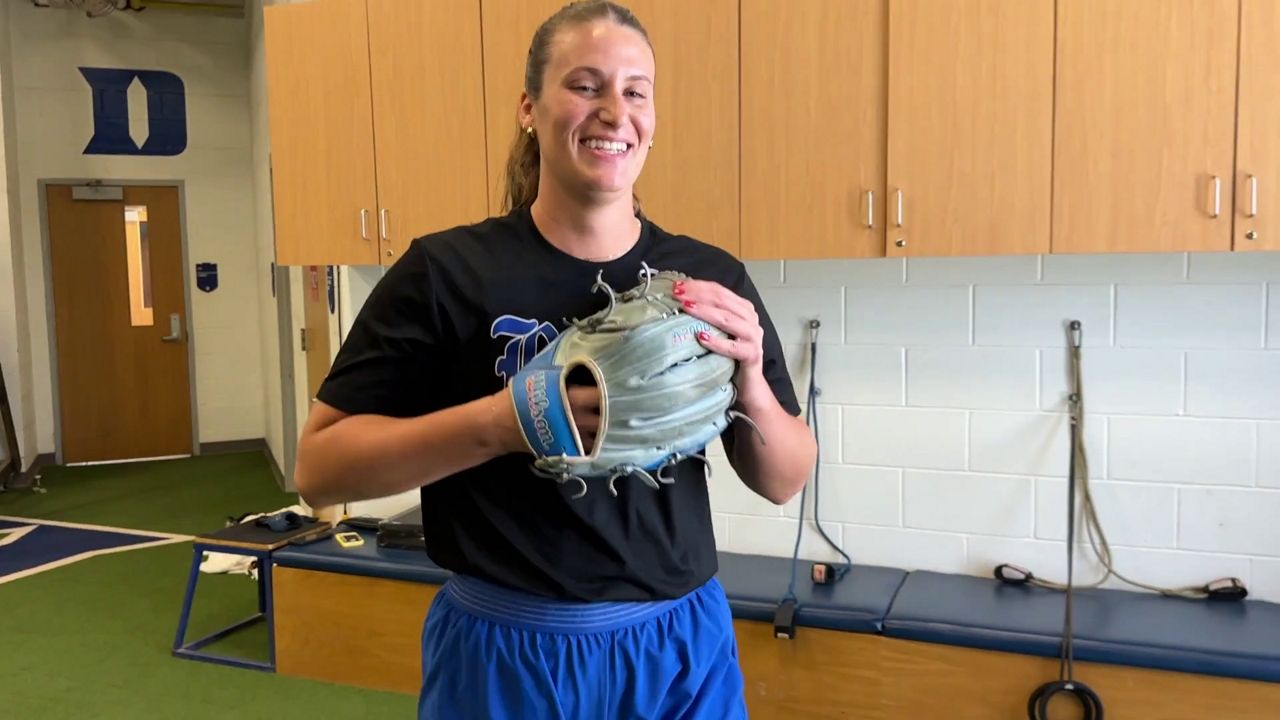
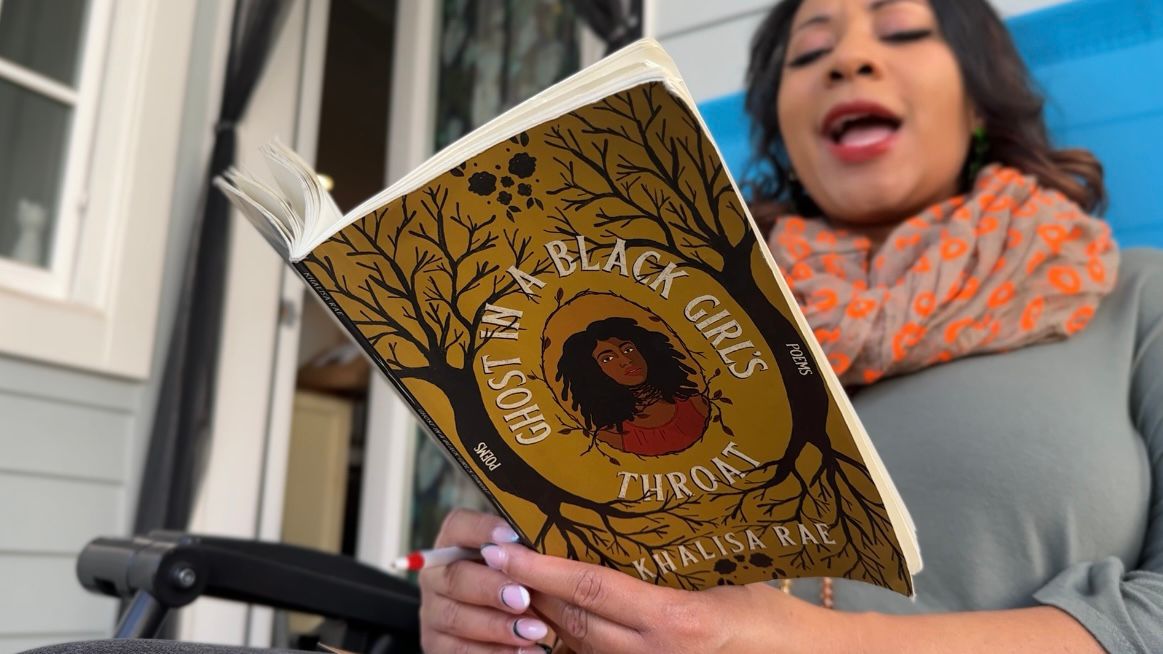
)
